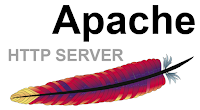Lab 2 - HTML & CSS
In this week's module, we covered two important front-end programming languages used in Web GIS: HTML (hypertext markup language) and CSS (Cascading Style Sheets). Together, these two technologies work "to control where web page elements show up, and how they look" (Morgan, 2018).
Additionally, we learned what exactly the web is, and how the process of requesting information and waiting to receive it via the clients and servers. Specifically, for this class (GIS 6110 Advanced Topics in GIS), we use Apache, a free and open-source cross-platform web server to view our work-in-progress web pages and web mapping applications.
For our lab assignment, we were tasked to format CSS and HTML for provided text regarding Bayou Texar near Pensacola, Florida, as well as provide a map. Based on literature provided about interactive maps, we were asked to consider if the map we used on our web page was dynamic or interactive. My answer is provided below, and screenshots to my final web page, too.
Additionally, we learned what exactly the web is, and how the process of requesting information and waiting to receive it via the clients and servers. Specifically, for this class (GIS 6110 Advanced Topics in GIS), we use Apache, a free and open-source cross-platform web server to view our work-in-progress web pages and web mapping applications.
For our lab assignment, we were tasked to format CSS and HTML for provided text regarding Bayou Texar near Pensacola, Florida, as well as provide a map. Based on literature provided about interactive maps, we were asked to consider if the map we used on our web page was dynamic or interactive. My answer is provided below, and screenshots to my final web page, too.
I consider the topographic map image of Bayou Texar on my web page to be “static”.
In his article, “The role of the map in a Web-GIS environment”, Kraak (2004) discusses
how the Web serves as a “medium to present and disseminate geospatial data and
maps” (p. 89), and that web “surfers expect interactivity” with a web page (p.
87). However, he translates this idea of interactivity into “clickable maps”,
that is, one that can zoom-in or -out, possibly pan, where layers can be turned
on or off, where queries can be conducted, and where clicking or hovering over
a symbol can give access to external data or links, etc. (p. 87). In 2018, I
think it’s safe to state that ‘clickable maps’ are what we now consider to be ‘dynamic
maps’ – basically, we interact with them, and they interact with us.
The map image on my web page isn’t interactive nor offers dynamic
capabilities; instead, it’s an “abstraction of geographic reality” intended to visualize
and reference a location (p. 86). Additionally, as a static map, it doesn’t need
to consider the same intense “demand driven environments” like dynamic maps do
to be able to render pixels on a screen (p. 87).
References
Kraak, M.-J. (2004). The role of the map in a Web-GIS environment.
Journal of Geographical Systems, 6(2). https://doi.org/10.1007/s10109-004-0127-2.
Morgan, J.D. (2018). GIS6110: Advanced Topics in GIS, module 2 [lecture and notes]. Retrieved from https://elearning.uwf.edu/index.cfm?



Comments
Post a Comment